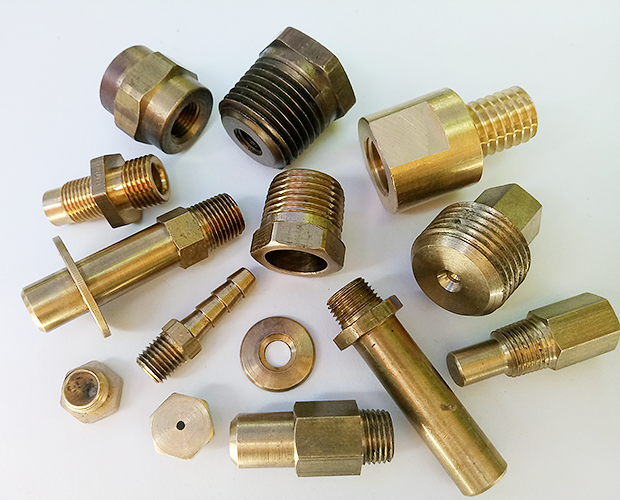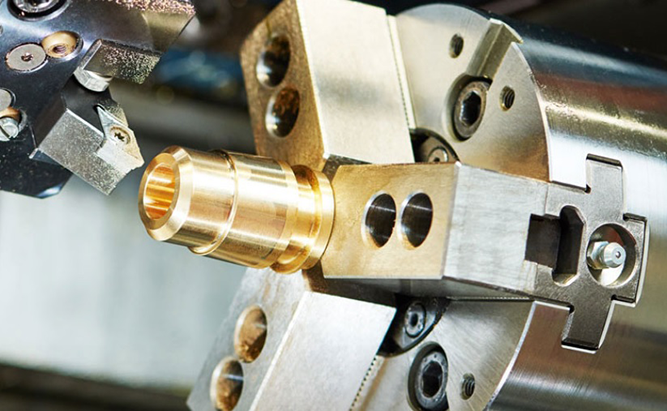| GRIZZLEY BRASS & BRONZE PRODUCTS | ||
|---|---|---|
| x | ||

Grizzley machines the following common grades of brass: C360, Naval Brass, Red Brass, Yellow
Brass, Lead Free Brass, Copper and Bronze.

Brass Offers Benefits from Machinability to Sustainability U.S. machine shops are potentially underutilizing the machinability of brass by as much as 85 percent in their part processing operations, reports a recent study from the Copper Development Association Inc. (CDA). The research shows that machine shops can and should be machining the material at significantly faster feeds and speeds often five to twenty times faster than they currently do to increase productivity and profitability. According to the study, today's brass rod materials not only machine easier and faster, they do so without having a negative impact on tool wear, part surface finishes or chip formation. Hence, with the power and rigidity of the latest high-speed machine tools, shops have the capability to boost brass workpiece material removal rates in their milling, drilling and turning operations. The study also asserts that alternative materials such as steel and stainless steel lack the competitive high-speed machining advantages derived from brass. Maximum achievable metal removal rate defines high-speed turning productivity limits, based on achieving acceptable surface finish, reasonable tool life and manageable chip formation. A production test of turning speed limits achieved eye-opening results that favored brass. After 4 hours of continuous turning with carbide tools at speeds higher than 3,000 Surface Feet per Minute (SFM), brass alloys produced minimal tool wear. The test also achieved speeds up to 4,000 SFM (greater than 16,500 RPM) on brass for diameters above 0.90 with no excessive spindle vibration or chatter. By comparison, steel alloys reached their limits at significantly lower speeds than brass and required more horsepower to remove material. Notably, tool life was at least eight times longer for brass at more than triple the speed. In addition to its machinability benefits, brass is also 100 percent recyclable. The high scrap value of brass allows manufacturers to recoup much of the initial raw material cost through scrap buy-back programs. Machining scrap in the form of chips is then used to produce new brass over and over again with no loss in material properties, contributing to a sustainable planet. |
||

